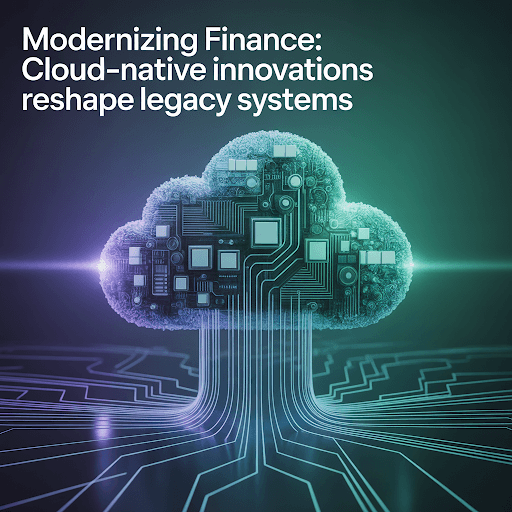
In the dynamic world of enterprise finance, Kishore Reddi Gaddama recognized thought leader in digital transformation, explores groundbreaking methods for revitalizing the aging backbone of the financial sector. This feature offers a detailed exploration of cloud-native innovation, illustrating how traditional financial systems are being transformed to successfully navigate and compete in a digital-first environment.
Breaking Free from the Past: The Legacy System Challenge
Legacy monolithic systems have anchored financial institutions for decades, but now hinder progress with tightly coupled components, centralized databases, and slow batch processing. Costly to maintain, they consume up to 80% of IT budgets, delay releases, and make real-time, always-on services challenging, stifling innovation.
The Cloud-Native Blueprint: A Layered Transformation
The proposed cloud-native reference architecture offers a stepwise approach to untangling this complexity. The design is built on layers, each targeting a specific challenge:
A diagram on page 4 of the article visually summarizes this multi-layered architecture, highlighting how each layer works together to deliver agility, security, and scalability.
Incremental Innovation: Transformation Patterns
The Strangler Fig Approach
The Strangler Fig Approach overlays new services on legacy systems using an API gateway, gradually shifting traffic to microservices. This method reduces project risk by up to 75% versus traditional replacements and improves delivery predictability (see Table 1, page 6).
Event-Driven Communication
Event-driven architecture replaces direct integrations with asynchronous, scalable operations using tools like Apache Kafka. This enhances transaction speed, reliability, and auditability for compliance. Implementing CQRS to separate read/write operations further boosts performance, especially in data-intensive areas like account management.
Data Modernization Strategies
Modern architectures promote a database-per-service approach, replacing monolithic databases with specialized, autonomous stores. This enables faster development, polyglot persistence, and reduced dependencies. Change Data Capture supports real-time sync, while data lakes and warehouses preserve analytics during migration.
Building for the Future: Toolchains and Automation
A modern toolchain is essential for consistent, automated delivery. Key innovations include:
Security and Compliance: Meeting Stringent Demands
Modern financial platforms prioritize security and compliance through automated frameworks that enforce regulations, maintain audit trails, and implement zero-trust principles. Enhanced API standards further secure open banking and data-sharing. These integrated measures minimize security incidents and streamline regulatory verification, as illustrated in the security framework diagram on page 8.
In conclusion, by applying these cloud-native patterns and technologies, financial institutions can transition from slow, risk-prone systems to platforms that support real-time analytics, integrated fintech solutions, and future-proof security. As Kishore Reddi Gaddam underscores, this architectural evolution is both a strategic necessity and an innovation opportunity, setting the stage for agile, secure, and resilient financial services for years to come.